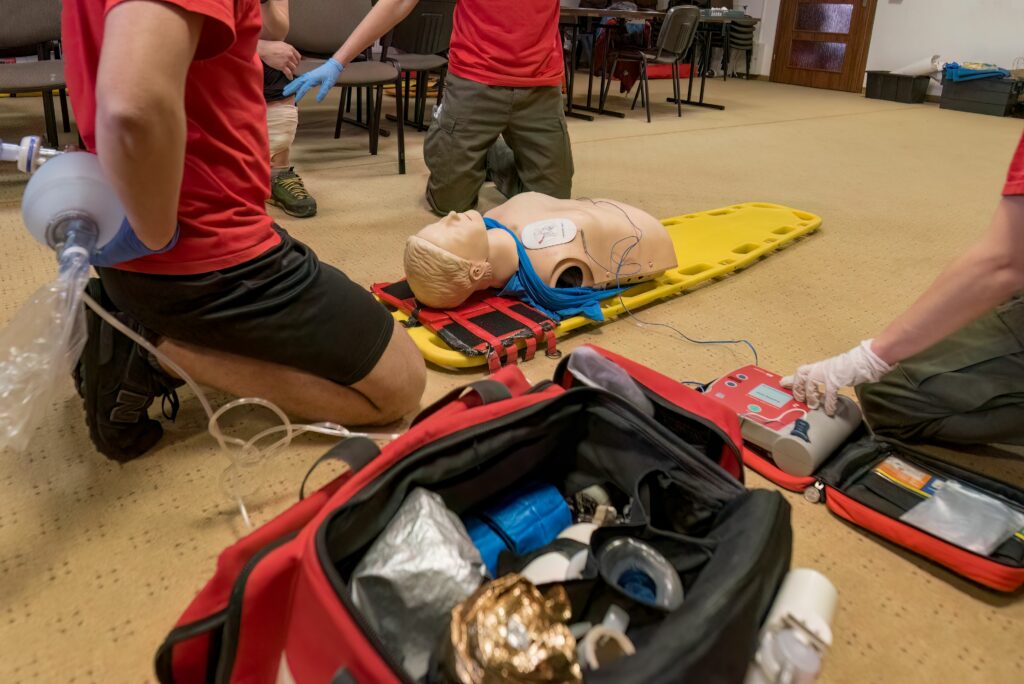Introduction
Every parent's problem is the idea of their newborn dealing with an important emergency situation. Understanding cardiopulmonary resuscitation (CPR) strategies particularly customized for babies can be the distinction in between life and death in such situations. Yet, lots of moms and dads are unaware of the one-of-a-kind procedures associated with carrying out CPR on babies. This extensive guide aims to gear up every moms and dad with vital knowledge and abilities concerning CPR on infants, diving into unique methods that can conserve lives.
CPR on Newborns: Distinct Methods Every Moms And Dad Ought To Know
Cardiopulmonary resuscitation (CPR) is a lifesaving method made use of in emergency situations when a person's breathing or heart beat has stopped. While lots of people recognize with adult CPR, the techniques vary significantly when it concerns infants. The delicate nature of a newborn calls for certain methods that vary from those made use of on older kids and adults.
Understanding Infant Makeup and Physiology
Before delving into CPR methods, it's critical to recognize the makeup and physiology of a newborn. Newborns have smaller sized lungs, fragile ribs, and a different blood circulation system than adults. Knowing these differences can aid parents carry out CPR even more effectively.
The Importance of Air passage Management
Newborns' air passages are smaller sized and a lot more prone to blockage; thus, air passage management is essential throughout an emergency. Moms and dads should learn just how to properly remove an air passage to make certain effective breathing restoration.
Recognizing When to Execute CPR
One of the very first steps in any type of emergency situation is acknowledging when CPR is necessary:

- Unresponsiveness: If your child isn't responding or moving. No Breathing: If your baby isn't breathing usually or at all. Abnormal Skin Color: A blue tint around lips or face indicates lack of oxygen.
Initial Evaluation: The DRSABCD Approach
The DRSABCD method is vital for evaluating any type of emergency circumstance:
D - Danger: Ensure the atmosphere is safe. R - Response: Inspect if the infant reacts by carefully drinking them. S - Send out for Help: Ask for emergency situation support if needed. A - Airway: Open the air passage by turning the head back gently. B - Breathing: Seek signs of breathing. C - Compression: If no breathing is found, commence CPR. D - Defibrillation: Utilize an AED if readily available and qualified to do so.The Actions to Execute Baby CPR
Performing CPR on a newborn differs substantially from adults because of their size and frailty:
1. Positioning
Lay the baby on their back on a company surface.
2. Opening Airway
Gently tilt the head back a little to open up the airway while guaranteeing not to overextend it.
3. Check Breathing
Look for breast movements and listen for breath appears for around 10 seconds.
4. Chest Compressions
Using two fingers placed just listed below the nipple line, lower approximately 1/3 depth of their chest (concerning 1-1.5 inches) at a price of 100-120 compressions per minute.

5. Rescue Breaths
After every 30 compressions, offer two mild rescue breaths:
- Seal your lips around their mouth and nose, Deliver each breath over one second while observing for chest increase, Repeat till you see signs of life or help arrives.
Common Errors During Baby CPR
Even well-intentioned initiatives may fail because of typical mistakes:
- Applying way too much stress throughout compressions can create injury. Failing to make sure proper head tilt may obstruct airflow. Not asking for support early sufficient can postpone vital care.
Mental Prep work for Emergencies
It's all-natural to feel panic in emergency situations; nevertheless, mental preparation plays a crucial function in efficiently carrying out first aid actions:
- Remain calm; worrying prevents clear thinking. Practice mindfulness techniques prior to entering parenthood.
FAQs About CPR on Newborns
What ought to I do if my newborn quits breathing?
If your newborn quits breathing, swiftly analyze their responsiveness, telephone call for help, check their respiratory tract, and commence CPR as thorough above.

How often must I take first aid courses?
It's recommended that parents freshen their understanding every two years by taking first aid training courses or details infant CPR training sessions.
Can I use an AED on an infant?
Generally speaking, AEDs are not recommended for babies under one year old unless particularly created for such usage; always follow manufacturer's instructions.
Where can I locate first aid training courses near me?
You can look online using terms like "first aid training course near me" or check local health centers or community centers that frequently supply these courses regularly.
How long does a first aid certification last?
Typically, many first aid certifications continue to be valid for three years before needing revival via correspondence course that include updated techniques like DRSABCD protocols.
Is it needed to discover mental health and wellness first aid as well?
Absolutely! Psychological health and wellness first aid outfits moms and dads with skills essential not only in physical emergencies but additionally in recognizing emotional distress among kids and adolescents.
Conclusion
Understanding "CPR on Newborns: Unique Methods Every Parent https://pastelink.net/hh9blcjo Should Know" isn't simply concerning obtaining technical abilities; it's about equipping on your own as a caregiver ready to deal with unexpected challenges head-on. Whether via dedicated training programs like those provided by numerous companies or exercising hands-on techniques with family members throughout workshops-- every effort counts in the direction of constructing self-confidence in your capacity to react efficiently during emergencies including your valuable newborns.
Incorporating this knowledge into your parenting toolkit can imply conserving lives when it matters most. So why wait? Subscribe today for courses such as "first aid course," "cpr training," or specialized "infant first aid training course" alternatives offered close by-- you never ever recognize when you might require them!